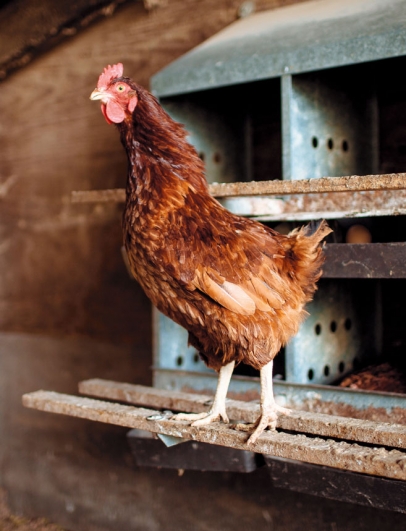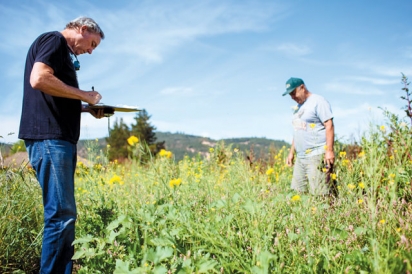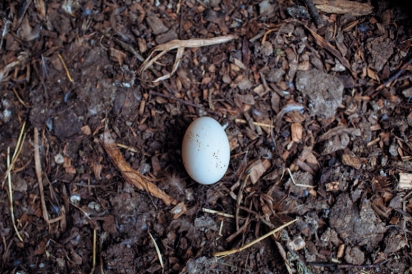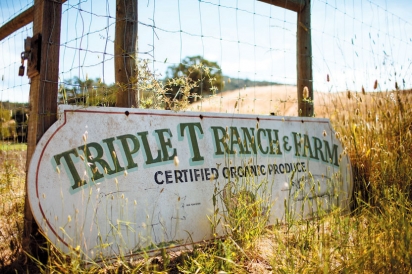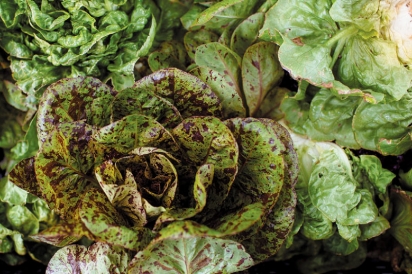Market Watch: Farm Audit Program Boosts Integrity of Offerings
The Thursday morning Marin Civic Center Farmers’ Market is a happy, festive place. No matter that you’re in the middle of a hectic week, you almost can’t help but be cheered by a visit to the extensive, bustling market—whether you have just a few things to pick up for yourself and your family or, like the many local chefs you will find there, you are shopping for an entire restaurant.
Well, what if you were one of the farmers at the market, there to earn a living by selling the fruits of your labor to eager customers, and you knew that the contents of your booth could be audited at any time. Yes, audited. The word alone brings an immediate clench to the stomach, no?
Notwithstanding the scary name, the Farm Audit Program instituted in 2010 by the Agricultural Institute of Marin (AIM), the entity that operates the year-round Thursday and Sunday Marin Civic Center Farmers’ Markets, among other markets, has a distinctly win-win feeling.
AIM says that it started the audit program to insure that purveyors who come to their markets are only selling what they actually grow or produce themselves.
As program manager Tyler Thayer sees it, this audit system is as much about consumer-farmer connection as it is quality assurance.
“People come to the farmers’ market to connect with their farmer, to know who is growing their food, and how and where that food is grown. The Farm Audit Program is a wonderful way for us to understand more about our farmers and vendors. Our goal is also to help these businesses to become more viable.”
Watching Thayer interact with Larry Tristano, farmer and proprietor of Triple T Ranch in Santa Rosa, on a recent morning proved that this was true. Thayer, clipboard in hand, inquires about various shades and shapes of bundled kale. He is detail oriented and thorough as makes his way around the abundant vegetal offerings on the Triple T stall tables, quizzing Tristano about the produce: “Is that the red or the curly kale ?” He carefully compares the answers to the lists on his clipboard, but remains congenial and positive as he conducts this first phase of the Triple T Ranch audit. The next step will be a visit to Tristano’s farm to confirm that what he offers at the market is all being grown there.
AIM’s Farm Audit Program is one of just a handful of programs nationwide designed to insure quality and integrity at farmers’ markets. Is this really necessary, you may ask? Well, yes, unfortunately, it is.
In 2010, just as the nation’s love affair with farmers’ markets came into full bloom, David Karp, a Los Angeles Times columnist and pomologist (fruit expert), reported disturbing instances of farm stand produce not being what it was purported to be at the LA County farmers’ markets.
Karp coined the term PNOOP (Product Not Of Own Production) and media attention around vendor transgressions, including selling nonorganic fruit with an organic label, began to apply pressure on farmers’ market operators, as well as the California State Assembly, to take measures to protect the public’s trust in the integrity of these markets.
It took the California legislature until last October to pass AB-1871, an important piece of legislation designed to help farmers’ markets across the state educate customers and regulate vendors through inspections by the California Department of Food and Agriculture (CDFA), but AIM had decided way back in 2010 that it was not going to wait around for the slow-moving implementation of state policies and it set to work designing its own program.
Auditing every vendor at larger farmers’ markets is no small task—currently there are 240 purveyors at the AIM markets, hailing from 38 of California’s 59 counties. The audit process is extensive and can be time- consuming, depending on the location and size of the farm. Four and a half years after AIM developed their program, Thayer recently completed the first round of audits of all current AIM farmers’ market vendors.
So how does the audit program actually work? Thayer starts with an unannounced “stall audit” at the market. This means he shows up at a stall with a list of what they are certified by the CDFA to sell and peruses the produce, looking for telltale signs of “cheating,” such as fruit that is “too pretty” or out of season in the region or oversized rubber bands that might have come from large-scale commercial operations.
The farmers are held to very high standards. They can’t offer anything not listed on their certificate from the CDFA, even if they grew it themselves. Everything on the lists and on the table must match up perfectly.
“Farmers are almost always receptive,” says Thayer. “They understand that we all need to be on the same page, and they want to be at a market with integrity, competing against real farmers, not cheaters.”
The next step in the audit process is for the farmer to provide Thayer with a map and layout of their farm and set up a time for a site visit within two weeks of the stall audit. In some cases that means Thayer will drive 20 minutes to a farm in West Marin. In other cases, he will drive hours to the Central Valley or far Northern California.
“The smallest farm I visit is about two acres. The largest is larger than 500 acres with sites in five different counties.”
The time it takes to do these audits can vary from hours to days, but in Thayer’s mind the time it takes is a key part of the success of the program.
“I went years running the farmers’ markets and not knowing what the farms looked like. Now I travel to the farm, I slow down and take the time to get to know the farmer, their land, to hear their story.” He is able to pass these stories on to consumers and students as the firsthand knowledge of the farms enriches the weekly educational market tours Thayer hosts.
According to Thayer, the percentage of farmers who are cheating is very low. Only 10 out of the 240 Thayer has audited have asked Thayer not to come out to the farm after a stall audit, and he has only had to ask one producer to leave the market. In certain cases, the issue is correctible and is simply a case of misinformation.
“For instance, the community of Hmong growers in Fresno didn’t fully understand the rules of our market,” says Thayer. “They are very close-knit, extended family with different farms in the same area in many cases, and they were not clear that they could not sell each other’s produce. That was just a matter of education.”
Thayer not only audits all farms and ranches currently selling, but also goes out to all prospective farms that apply to set up a stall at an AIM farmers’ market before they are approved to sell.
At the end of the Triple T stall audit, Thayer and Tristano discuss the shape and coloration of a particular beet. Thayer is shocked that it is not a turnip, so Tristano cuts it open to show him it is indeed a beautiful deep purple beet.
“I have been involved with farmers’ markets for a long time,” says Thayer, shaking his head. “But I still learn so much from these farmers, The time I spend with them only increases my appreciation of them, and my appreciation of what it takes to farm.”
Becoming a national leader in raising the bar for the quality and integrity of farmers’ markets is part of AIM’s big-picture vision. Another important element is AIM’s proposed plan to build a permanent home for the Marin County Farmers’ Market at the Civic Center. The proposed plan would include a market canopy—literally putting a roof over the farmers’ heads—and a large market hall.
Thayer and his AIM colleagues envision a national showcase, a landmark “dedicated to farms, families and food,” and a place to “make healthy, locally grown food more accessible to people of all ages, abilities and economic capacities; educate eaters and farmers about sustainable food and farming; and promote healthy eating and local living economies.”
In June 2014, Marin voters passed Measure B with a resounding 84% yes vote, granting approval for the construction of a permanent market on the Civic Center campus (but not public funding for the project) and since then AIM has undertaken a large-scale fundraising effort in order to bring their vision to fruition. For more information visit Agriculturallnstitute.org/the-campaign-for-the-market-hall-and-canopy.


